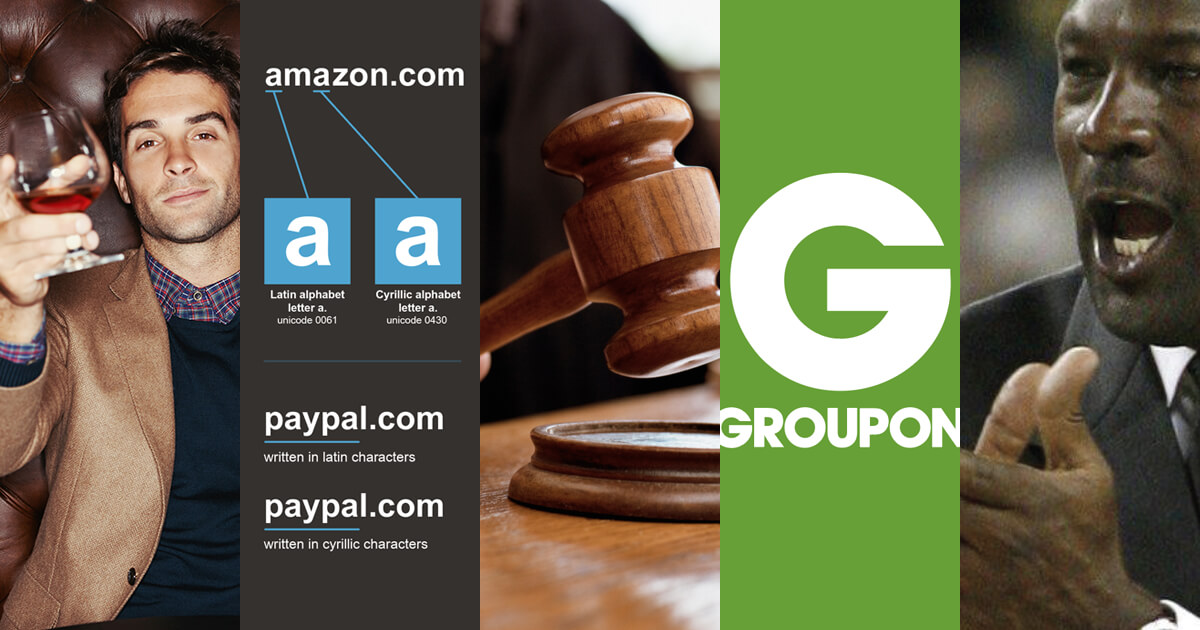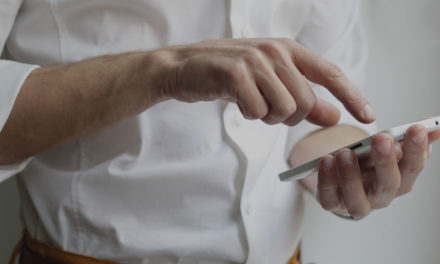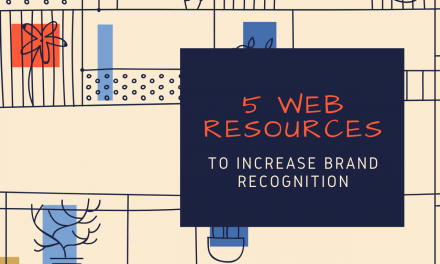
Cybersquatting and Trademark Infringement in the Global Domain Sector
Explore topics around cybersquatting and trademark infringement in domain names. We will provide you with solutions to better advise your clients on various prevention methods, and the quickest and cost-effective paths to resolution in international domain name disputes. You can watch the webinar here.
Transcript:
Anthony:
All Right, ladies and gentlemen, while we have, people are still trickling in, I want to welcome everybody here today on this beautiful Wednesday to our second in a series of ongoing webinars that we are doing on a quarterly basis. This one entitled, “Cybersquatting and Trademark Infringement in the Global Domain Sector”. As many of you know, and, and I see a lot of familiar faces on the attendee list, 101domain is a global domain name registrar. We have arguably more accreditations than any other registrar out there. In all new GTLDs, legacy generics and pretty much every country code you can imagine, and as you can also imagine with that navigating the landscape in terms of trademark infringement and brand protection when it comes to domain names can become a little bit overwhelming and a little bit complicated.
So this particular webinar today is, is designed to give you some insights on that and give you an overview of how the global domain system works in this aspect. I’m just want to point your attention to, your Go to Meeting functionality. We have included a couple of handouts that you’re able to download during or after the Webinar and we do have a person moderating the chat channel, so if you have any questions that come up during the Webinar, we will have a Q&A at the end. So hopefully we can get to all those questions in time. And with that, thank you all for attending. And I’m going to hand it over to Kimberly who is our Senior Corporate Services Executive. Then she’s going to take it from here.
Kimberly:
Thank you, Anthony. Welcome to everyone and I’m Kimberly Darwin, the Senior Corporate Services Executive at 101domain. And that means I work with the corporations, a lot of law firms and helping you maintain your brand on the Internet. So what we’re going to talk about today with 101domain is will always have something centered around a domain name or enabling you to better use domain names. So this webinar will also discuss that. And because they are such a significant part of brand visibility, we really do want you to be educated on how they’re being used both by your clients and other people who may not really have the right to use them. So with that said, we will start by talking about who owns domain names. So besides you or your client owning domain names, there are other people who have an interest in owning them.
And the two major groups are the domain investors and the cybersquatters. So domain investors will generally be your speculators. Those people who are watching what’s coming up as far as trends are concerned, putting words together and then registering them in advance of that trend. And that’s been going on since. So let’s see, when did I start in the, in the nineties where people were saying, oh, that sounds like a good idea. I’m gonna go get that domain name. So these people were doing it from a speculative basis, hoping that it would turn out to be profitable for them. And as you can see with insurance.com, that was the highest recorded, publicly recorded domain names sale at 35.6 million. So you can see that these names are paying off. Insurance.com would have been one of those that was registered way, way, way back by an investor.

Cybersquatting is not only a threat to your brand image and goodwill, but can cost your company considerably.


And it’s pretty amazing. The last one I did had probably about 300 different permutations for that particular term. So there’s quite a few. And with that said, just in case you don’t know, there is a way to block those terms with a DPML block. Identity Digital is the registry that has released 241 different extensions right now, which you can see on the right. They do include a block that you can purchase for your brand or your client’s brand. And now they do include that homograph protection. So you don’t even have to worry about registering those names. If you are interested in the block and it works for you, they’re automatically covered. So something to think about there. And as far as disputes are concerned, the UDRP and the URS, we talked about that in the last webinar a little bit about how you can file these disputes for any registry that is governed by ICANN.
And so when we get to country code disputes, it’s a little bit different because they are not governed by, ICANN. Now, some may choose to follow ICANN guidelines which makes everybody’s life easier when they do, but there are quite a few that are just basically the wild west out there. And you will have to adopt their process if you are interested in disputing a domain name ownership in that region. So for instance, China, they have a two year deadline and this has come up a lot with people lately, when you’re not monitoring your brand’s name and then all the sudden you do, you have these reports, have names that are very, very much in, in infringement of your brand and there are over two years old. China doesn’t allow you to dispute those anymore other than using a civil suit. So Chinese trademarks also will override other trademarks outside. And so it’s very easy to apply for a trademark which we’re going to see in the next slide. Someone did for Michael Jordan’s name and be awarded a trademark in China which gives you the right in China to own that name. So these are some of the challenges that you might encounter if you’re disputing in China.

- 2-year deadline
- Chinese trademarks for popular brands are commonly awarded to anyone requesting them.
- Has own dispute process similar to UDRP
- Has no dispute process
- Civil litigation is necessary

It’s going to be specifically about the DPMLs. So if you or your clients are interested in learning about how the brand can be protected across all of the Identity Digital extensions, we’re going to have Matt Bamonte from Identity Digital on there with us for a question and answer session, very relaxed, and you’ll be able to ask any specific questions as to what’s covered, whether it will be worth it for your client, a retroactive registrations which it does cover, meaning things that have already launched. You can even block those. So that should be an informative session. And so I am going to open it up to questions now and if anybody has any questions, I think we have none just yet, but I see somebody typing.
Kimberly, I want to mention. This is Anthony guys. On homographs attacks, I just can’t reiterate enough. This is a new trend that we’re seeing. It’s very hard to detect for a user and for a brand owner, quite frankly, when you’re talking about different character sets, you’re getting into internationalized domain names and you really have to look at the coding behind these to recognize them. I can tell you from experience, 101domain we’re very aggressive in protecting our name around the world. We have the term 101domain and 101domains and variations registered in a ton of jurisdictions we have seen personally, in some homogrpah type registrations that we’ve had to deal with and they pop up for us periodically. So I really do recommend, as Kimberly mentioned, we can run a report for you or for your client on these. So at least you get a sense of what’s out there. If any of these names are currently registered, we can help you zero in on those and really just put it in front of the client or the decision makers in your organization. Because it is a known threat, it is something that is happening and I suspect it’s going to be happening more and more as word kind of gets out on this particular tactic.
Kimberly:
Well, thank you. I agree. And I’ve actually had people send me some of these homographs and I was completely confused. I’m thinking, what are you talking about until I ran it through. We have a tool on our site that will pull out the language for you and also translate for you so that you can check what those unicode numbers are and make sure that you’re actually going to the right site. Now it is a huge thing and it is very hard to miss. And so we do. This actually brings us to a question.
Domain Disputes Q & A
Answer: Well, basically you’ve got two lines of thought, the defensive registrations where most of my clients have chosen to do that, where we’ll create a gap report for you, which is free and allow you to see who owns your names and who doesn’t own your names and if you can defensively scoop those up, it will be an easier path for you or your client by owning those names and just directing them to your main site.
Other than that, monitoring does definitely help. If you have a brand that’s very volatile, meaning that you’ve got a lot of counterfeiters or you’ve got people who are maybe a bank or a law firm anywhere where sensitive information could be collected, then you very well might want to be involved in some kind of monitoring so that you can watch those. The DPML block, great idea. It works for many people depending on your sector. So we’re always happy to consult with you if that is maybe an option that you might consider for your client.
Question: “Is the homograph registrations, are they allowed for generic extensions or donut extensions only?”
Answer: They are allowed for almost everything, but it, and Anthony, you can correct me, but I’m almost positive that anybody that allows any other kind of alphabet outside of Latin, it would apply to them.
Anthony:
That’s correct. And if you look at .com as an example. .om allows a few dozen different characters sets to be registered as .com names. So the strings in front of the dot of course. And really most of the generic names do allow quite a few character sets and quite a few, I would say probably the majority of the country codes do as well. If you go to our website there is a section on the site that gives you insight into the different language sets. And we can always provide you that information as well on request. But it is a technical capability that most TLDs do allow.
Kimberly:
Okay. Thank you. We have a question. Hi Rob. Nice to see you here.
Question: “What is the current price point for paying for squatted domains versus filing action?”
Answer: That’s a really good question and it depends on where that dispute would be, but assuming that you’re talking about a UDRP or URS or even those countries that have been following that sort of UDRP process, it’s generally between, it’s usually about $4,000 or less and that, you know, depending on whether you’re charging billable hours or what that would be, but you know, the legal expenses on top of the filing fee, I would say roughly $4,000. And I’m seeing this in Russia, they’re really good about knowing what those thresholds are and they are pretty good about staying within it and giving themselves enough profit and making the transaction easier if you do come to a buying price and go through with that transaction.
And let’s see, you left me another question.
Question: “What is the current ratio of UDRP versus URS with regard to clients choosing one or the other?”
Answer: That’s a good question. I don’t have the exact numbers, but I’ll give you pretty close. It’s about 92% UDRP to 8% URS, and I am under the impression that there are two reasons for that. The first reason is that a lot of people don’t know about the URS as much. And the second reason is that you really have to have a very, very solid case in a URS. Really, really, really obvious trademark infringement because it’s such a quick decision by one panelist. So, UDRP still is reigning and I think we did have a slide in there where it said that maybe about 80% of the UDRPs are going on the complainant’s side, meaning that they are being transferred to the brand owner. So that’s, that’s good news.
And let’s see.
Question: “Is purchasing someone else’s branded domain name illegal? What if they have an affiliate program and you are using the domain to generate business for them while also generating affiliate income for yourself?”
Answer: I’m not a lawyer and so I won’t be answering whether it’s illegal or not, but I have seen cases where a brand owner has not understood that a domain name was purchased for use may be by a distributor which happens a lot in the vitamin industry, and they’re actually selling their product. They think that they’re doing good by using that brand, but they still may be infringing depending upon whether there is an agreement in place for them being able to use that brand in a domain name. So it is case by case basis on that one.
Anthony:
And that Kimberly, I would say if it’s a generic name or a name that’s under UDRP, it’s not a question of illegal or not. It’s whether the trademark holder is able to use the URDP process to get that name back. So it’s the three tests really. Does the user have rights to the name? Is it damaging the company that you’re attempting to be an affiliate for? And those do get into gray areas. You know, I think we’ve seen business models in the past that have focused on this type of thing and it’s gone in either direction. Some companies, are they willing to work with those users developing those sites. Others have had a pretty strong enforcement stance on that as well.
Kimberly:
Okay. Yeah. And I have seen it on both sides. Some brands really do rope in all of those domain names and some just allow them to continue on with the use if they feel like it’s not infringing on their trademark, they’re just trying to expand. So you would definitely have to look at each case on that one.
Question: “Do we provide domain monitoring services for homographs registrations?”
Anthony:
Answer: We do and our monitoring service that we provide it does accommodate for homographs and we can send you more information on that after the Webinar.
Kimberly:
Okay. Let’s make sure I got every question here.
Question: “How long does the dispute process typically take?”
Answer: I think that we’re probably talking about if we’re talking about a UDPR or URS. Oh my, let’s see. It really depends on how responsive everybody is, but the one that we’ve been doing for Brazil with the country code is probably three to four weeks. We would hope that UDRPs would probably stay in the two-week range and the URS do seem to be much quicker since it’s your faster decision. So if that’s a service that you’re providing for your client, make sure that you’re setting those expectations.
Okay. Any more questions. Let’s see.
Anthony:
I did want to go back everyone, sorry Kimberly, to the IDN tool that you mentioned, if you guys go to our website, down to the footer on the bottom menu at the bottom of the homepage, you’ll see under resources and tools a link titled IDN Conversion Tool. So that will allow you to put a name in there and it will spit out the results of what it is, whether it’s just Latin characters or a different character set. So it’s a good tool to have handy. There are other tools like that out there as well. And additionally, if you go to any domain extension product page on our website, you will see at the bottom of that product page the different language sets that are available to be registered for that specific TLD. So also a good resource for you to keep in mind.
Kimberly:
Okay. I think we got one more question.
Question: “So for a company to take back a domain name, do they have to have registered their trademark before the domain was registered or is it possible to take it back if other criteria are fulfilled?”
Answer: 99%, and you can correct me Anthony if you’ve seen more than this, but 99 percent of the time, yes, I think I have seen one fluke where someone registered or within the process or it was literally days between when the domain was registered and when the trademark was awarded. However, for the most part, you would need to have that trademark already awarded with few exceptions, Australia being one where you’re allowed to have an application, but that’s a rarity. You would have to have that trademark already registered in order to show those three things.
Anthony:
That is correct. And that goes to the question, did the registrant have legitimate rights to the name if there’s not a trademark registered for the name is going to be difficult for the complainant to make that argument that when he registered the name, someone else had a right to the name at that time.
Kimberly:
Excellent. So not only filed, but registered that is correctly understood. Yes. Like I said, with very few exceptions, Australia being one of them. And Lisa, yes. This, this session is being recorded. We will have it available for you within 24 hours and hopefully this has been good for you and you can review it and feel free to reach out and ask any questions of us because they are sure to pop up later. I do have another question. I’m not sure I understand it.
Question: “Is there any recognition for well-known marks which are not registered?”
Kimberly: Are you referring to marks as opposed to Emoji or I might need a little bit more information on that question. I’m not quite sure I understand that. Do you understand that?
Anthony:
Answer: Yeah. I think they’re referring to well-known trademarks. So if a name, a trade name is well known, but it’s not a trademarked name, meaning it’s not a trademark registration, whether that that meets the requirements. I can’t think off the top of my head as far as UDRP goes. I’ve seen a case where the complainant did not have a trademark. Usually it’s pretty clear that they have a trademark, they have rights. There are things, you know, again, we’re not attorneys, but there are common law rights and I think in some jurisdictions and country codes out there, may recognize that. As far as civil suits, you know, there’s a lot more factors in play when determining who has rights or not to a particular name.
Kimberly:
Yeah. And now that you, you’ve explained it, I do see that there is kind of a trend of celebrities are fighting for their name, just as we saw with Michael Jordan. And on the flip side, we’re here to register domains, we often have some of these country code registries that make us prove that the person, the actual celebrity or a high profile individual that’s trying to register the name is who they are. So there are plenty of those registries that are concerned about awarding these domain names to people who really do have legitimate interest in them. So it’s not just one sided, there are plenty of registries who just didn’t want to get involved if it’s going to end up being litigation later. So there will request documentation with signed, maybe they want their autograph, I don’t know, but signed information that proves that, sorta like the check mark in twitter. I am who I am and I really want this domain name for me. So hopefully that answered your question. Any other questions before we wrap up?
Okay. Thank you. I’m glad I answered your question and otherwise feel free to reach out to us and thank you so much for staying with us here today on Wednesday. And hopefully this was informative to you. And again, thank you so much for visiting and have a great day.






